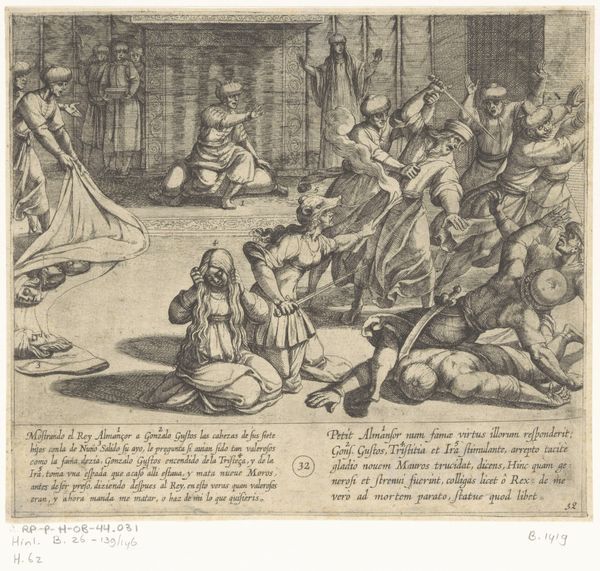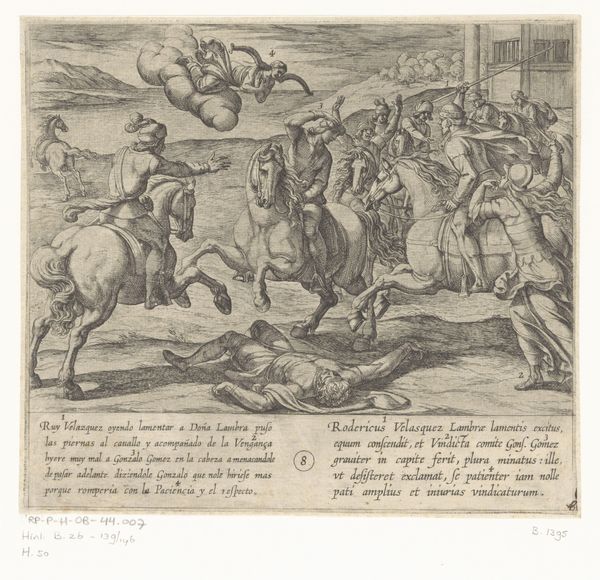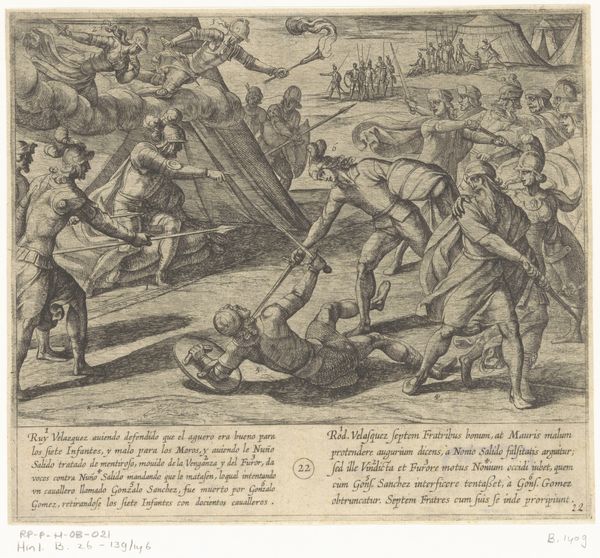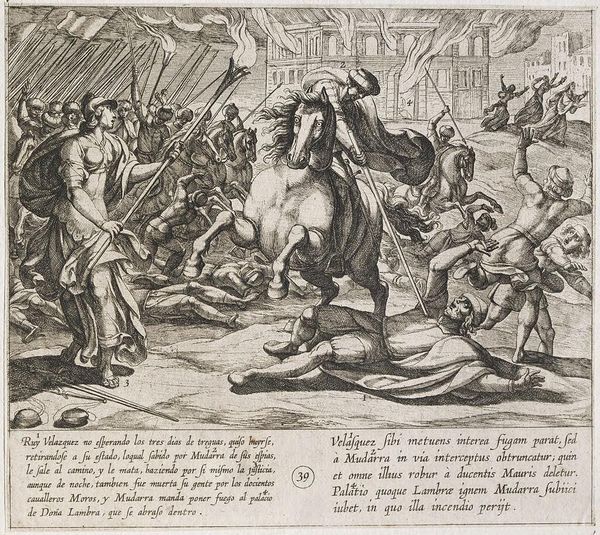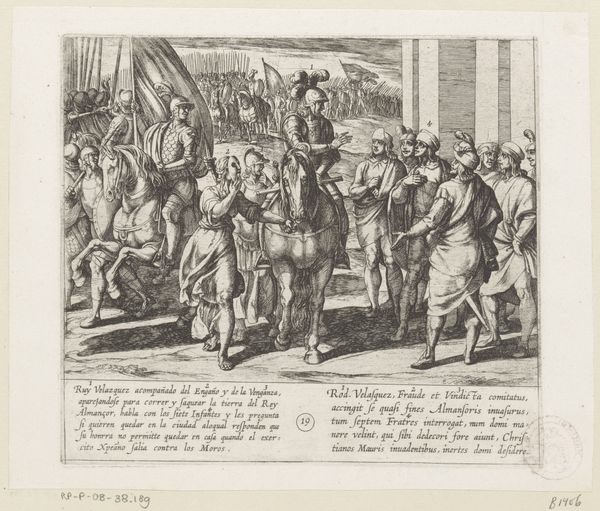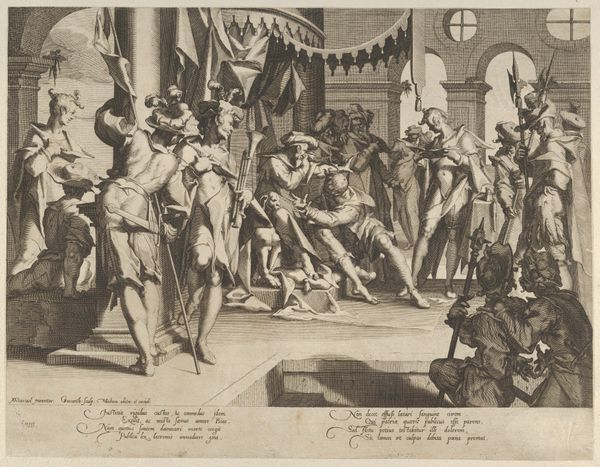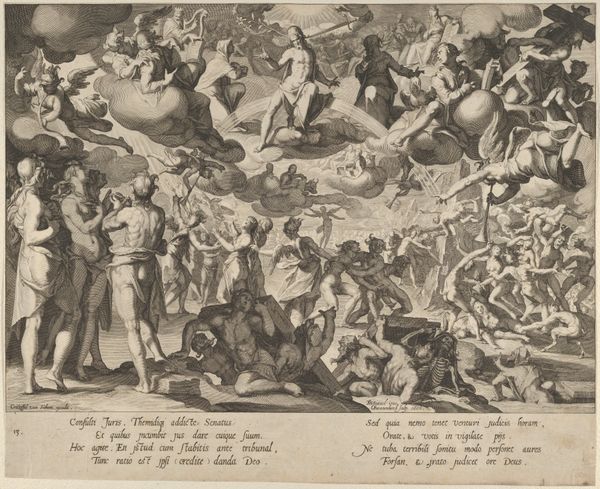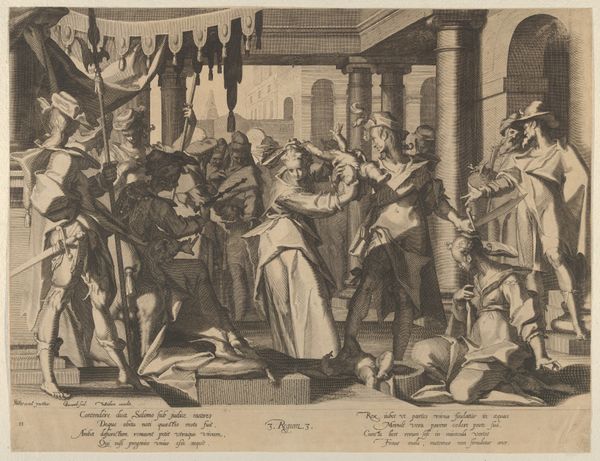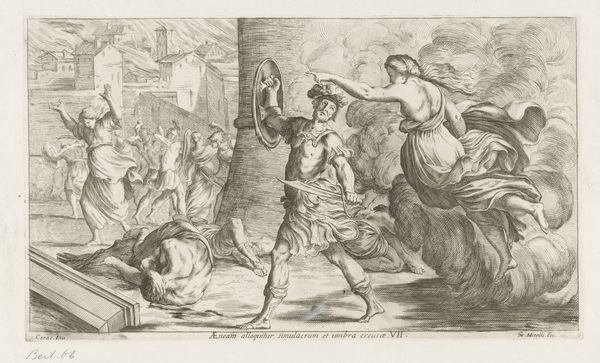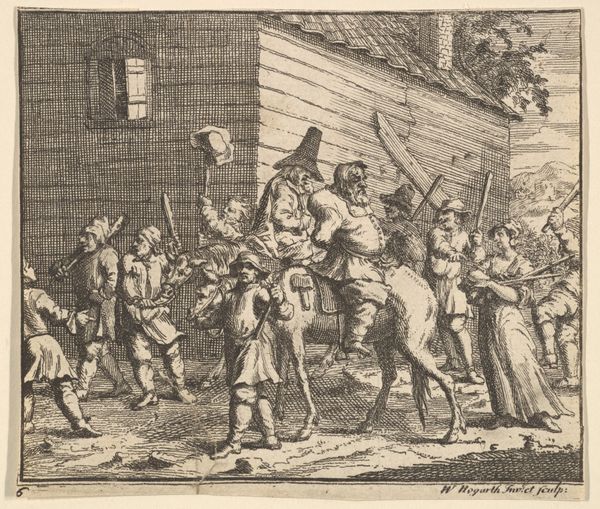
Ruy Velazquez probeert te ontsnappen en wordt door Mudarra afgeslacht 1612
0:00
0:00
antoniotempesta
Rijksmuseum
print, engraving
#
narrative-art
#
baroque
# print
#
old engraving style
#
classical-realism
#
figuration
#
history-painting
#
engraving
Dimensions: height 185 mm, width 206 mm
Copyright: Rijks Museum: Open Domain
Curator: This print, titled *Ruy Velazquez probeert te ontsnappen en wordt door Mudarra afgeslacht*, was created by Antonio Tempesta in 1612. It's currently held in the Rijksmuseum. The frenetic energy is quite striking, don’t you think? All of the figures in motion give a real sense of drama. How does it strike you? Editor: It definitely captures a violent scene. The scale is relatively small, given its location in the museum as well as the medium itself, yet it conveys such a sense of chaos. I’m curious about the choice of materials – what does the engraving medium contribute to the work? Curator: Consider the function of prints like this during the period. The engraving process allows for reproducibility, thereby enabling wider access to images and narratives for a growing literate public. Furthermore, think about the economic implications. Tempesta, as the designer of the print, relied on the skilled labor of an engraver to transfer the design onto a metal plate for mass production. It represents a form of cultural production and dissemination accessible to broader social strata than painting. What do you make of that aspect? Editor: I see how engraving democratized access. So, rather than focusing on individual genius, we look at the collaborative process and the broader circulation of this violent story through printmaking. Curator: Precisely. The 'old engraving style' – notice the lines. What do you see there, particularly in relation to production, and its connection to labour? Editor: I can see how demanding it is to use printmaking effectively, and I imagine the artistic demands and labor would also contribute significantly to the reading and cultural meanings we derive. Curator: Exactly. By thinking through its materiality, we begin to consider the human labour behind art, not just its aesthetic or narrative value. This image gives a glimpse into a material world where making and marketing went hand-in-hand. What final thought do you take away from all this? Editor: It definitely encourages me to reconsider how artistic production in early modernity really involved more collective forms of making and consumption that extend far beyond painting. Curator: And perhaps think about how that relates to artistic consumption and making today, which continues to blend high art with craft in so many intriguing ways.
Comments
No comments
Be the first to comment and join the conversation on the ultimate creative platform.
